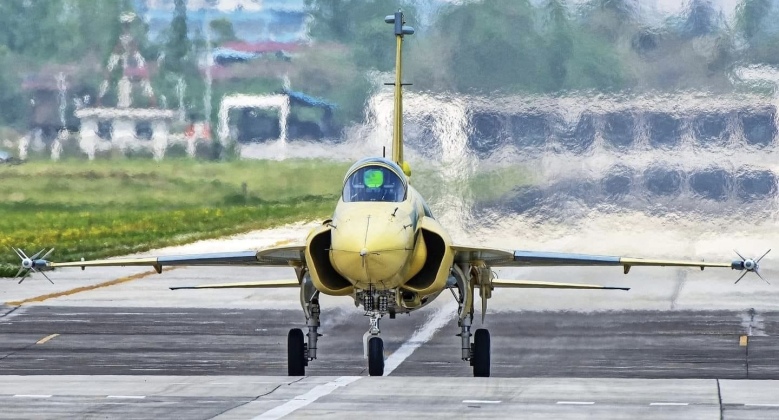News
Why Iran Isn’t Keen to Replace its Ageing F-4D/E and F-5E Fighters: Preserving Domestic Industry at a High Cost
Following the expiry of a United Nations arms embargo on Iran in October 2020, it was widely speculated that the Iranian Air Force could begin to receive new fighter aircraft from abroad to replace the increasingly obsolete Vietnam War era American aircraft that continue to form the backbone of its fleet. Iran’s two primary fighters today are the F-4D/E Phantom and F-5E Tiger II, which are modernised variants of airframes that first entered service in 1960 and 1962 respectively and were superseded by the F-15 and F-16 respectively in the 1970s. Of Iran’s 18 fighter squadrons, 11 are comprised of F-4s and F-5s with approximately 90 F-5s and 70 F-4s currently in service for a total of 160 airframes. Both aircraft initially belonged to the second generation, but the modernised variants acquired by Iran were considered third generation fighters with the F-4s imported with AIM-7 Sparrow missiles to provide an advanced beyond visual range engagement capability. Although the aircraft have been extensively upgraded domestically, they have been considered outdated for air to air combat since the 1980s with the F-4s taking losses in minor clashes with the Royal Saudi Air Force’s F-15s that decade where they were outmatched. While Iran’s potential adversaries have modernised their aerial warfare capabilities considerably over the past four decades, with the U.S. fielding fifth generation fighters since 2005, the capabilities of the F-4 and F-5 have only grown more obsolete.

Modernisation of Iranian F-4 and F-5 fighters has focused on improving their capabilities for roles other than air to air combat, with F-4s in particular optimised for air to ground and anti shipping missions. They have for the former role been equipped with domestically developed precision guided bombs, which where demonstrated in combat by Iranian drones on strike missions in Syria as well as in limited strikes by F-4s on Islamic State insurgents in Iraq. For anti shipping the fighters have used a range of Chinese cruise missile designs which have been produced under license in Iran since the 2000s, and take advantage of the F-4’s high endurance, large carrying capacity and high speed and altitude. While the F-4 and F-5 are fast ageing, it remains uncertain whether the Iranian Air Force is in fact intending to phase them out of service despite affordable fourth generation foreign aircraft being available.
Although the fighters may remain somewhat viable in strike roles, the age of the airframes which are both worn out and built with long outdated manufacturing techniques mean operational costs particularly for the heavier F-4 are significantly higher than a modern lightweight multirole fighter purchased from abroad such as the Chinese J-10 or Sino-Pakistani JF-17 or the Russian medium weight MiG-29M. The discrepancy in operational costs means it may in fact be cheaper for Iran to purchase new fighters rather than retain the old ones in service, which to many is the most powerful argument for a foreign acquisition.

Despite the benefits of replacing the F-4 and F-5, including expected substantial savings from reduced operational costs, the Iranian Air Force may choose to retain its legacy fighters for a number of reasons. The primary reason is the the Iranian defence sector, having worked with F-4s for close to 50 years and F-5s for close to 60, is not only highly familiar with the designs but has developed an entire industry to provide maintenance, upgrades, spare parts, avionics upgrades and all other services to continue operating the fighters. Should it transition to a foreign fighter design, even one with simple maintenance such as the JF-17, this industry and high degree of self reliance would be lost and the Iranian Air Force would become dependant on foreign sources for spare parts, air launched munitions, and all manner of upgrades.
The F-4 and F-5 have effectively become Iranian indigenous fighters, to the extent that the latter is even being manufactured in the country following years long reverse engineering efforts on the original design with the improved indigenous derivative named Kowsar. Iranian official sources have announced that the country is developing a new generation of heavier fighters, and this could allow domestic industry to transition away from servicing the F-4 and F-5 to build and service the new indigenous aircraft, modernising the fleet while still maintaining domestic industry. While this is not expected to be as cost effective as acquiring an already developed foreign aircraft such as the J-10C or JF-17, Iran’s longstanding emphasis on self reliance means this may well be more favourable. Ultimately while Iran may well make acquisitions of foreign fighter aircraft, most likely the Chinese J-10C which could form new elite units, it is unlikely to retire the F-4 and F-5 entirely for a foreign design.












